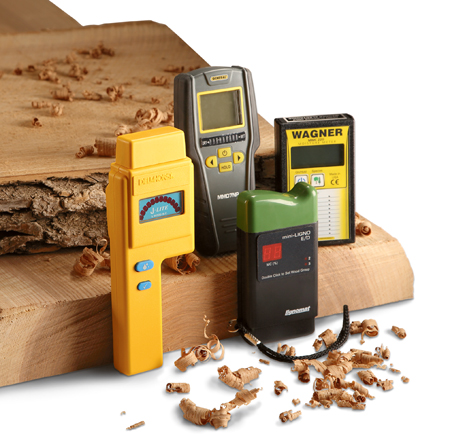
There are lots of questions out there about moisture meters lately. What are they, why do you use them and which one should I buy?
Ellis Walentine: The biggest reason to own a moisture meter is to predict how much your wood will shrink or expand after you’ve built something with it. If you know the present moisture content (MC) of a piece of wood, and the range of MC that the wood will span in use, you can figure out how much to allow for shrinkage and expansion in your designs.
With the exception of some Wagner models, meters rely on pins driven into the wood. They gauge moisture content by measuring the resistance of the wood between the pins. Most meters are accurate enough down to about 7 percent MC, but their accuracy falls off at lower readings because the resistance of the wood goes up so steeply. Higher priced meters are more accurate in this lower MC range; but, for most purposes, you don’t need the extra accuracy.
You can also use a meter to gauge whether a board is uniformly dry, inside and out. This can help you to predict reactions as you rip or resaw the stock. For example, if you intend to saw 1/10 ” thick veneers from a plank, it would be helpful to know in advance whether the veneers (and the plank itself) are likely to cup or curl as the stresses of unequal MC are released. For this type of application, and any others where you need to measure moisture at a depth greater than about 1/4 “, consider an auxiliary probe with a sliding, weighted handle and long pins. Some models of moisture meters offer this type of probe as an accessory, but others don’t. One argument I’ve heard about pinless meters is that they can only reliably measure 3/4” in depth.






